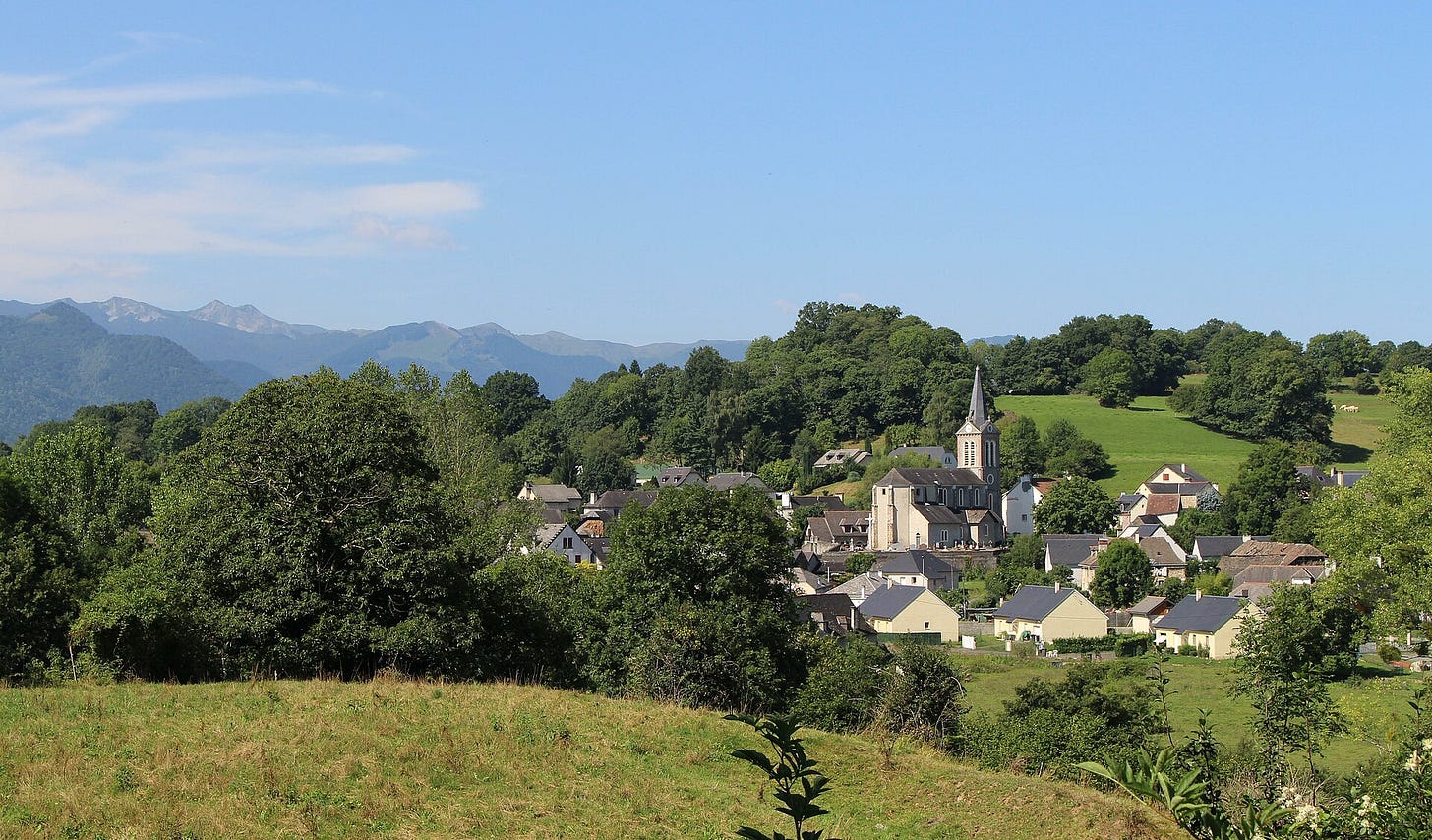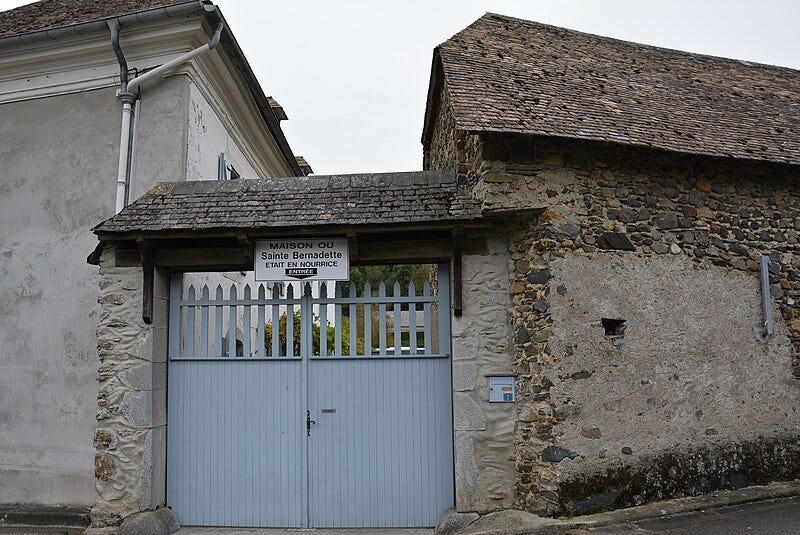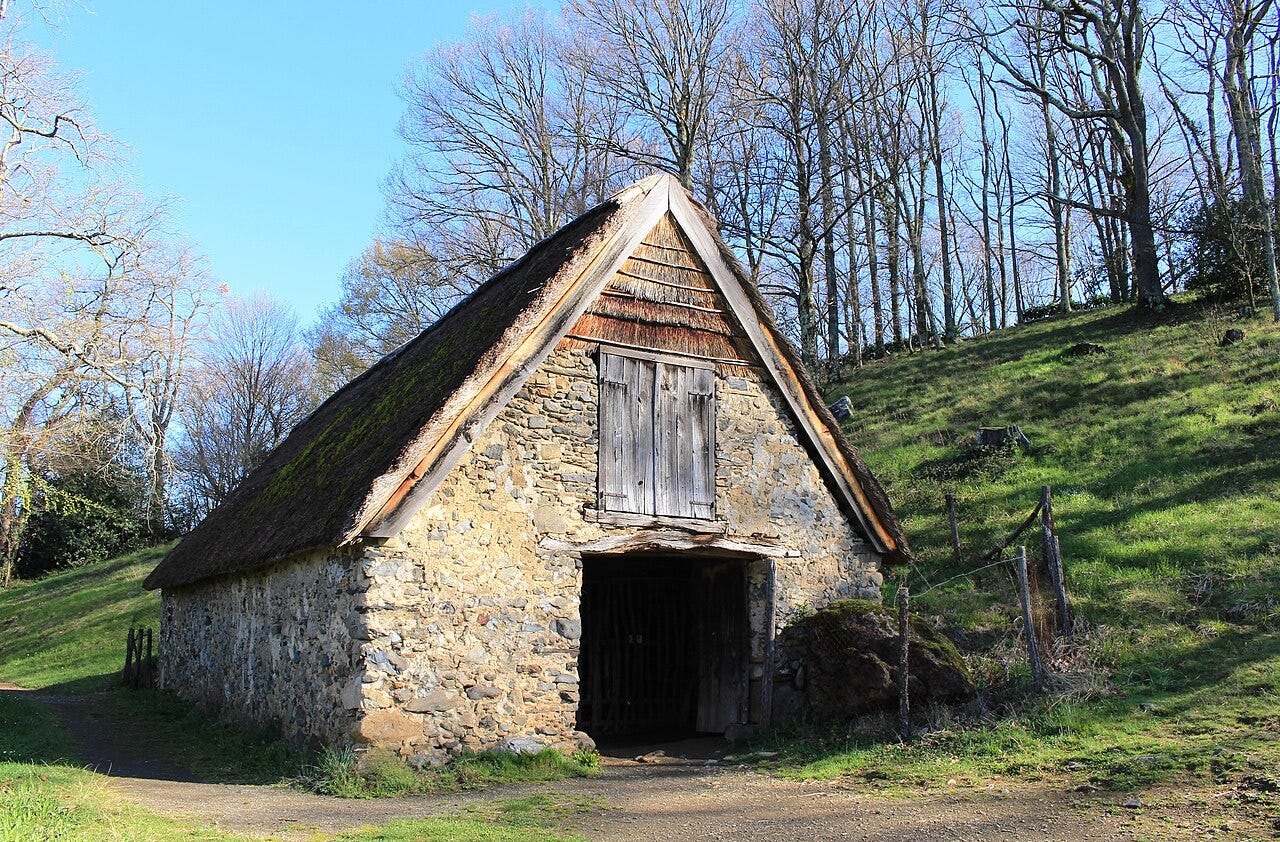On the steps of St Bernadette in Bartrès
The 2024 party of the Wimbledon College Lourdes Hospitalité discovers St Bernadette before the 1858 apparitions
The busy schedule of a hospitalier often requires us to find moments of prayer in and through our service. So during our 2024 working party, two Italian scouts, who were the chefs d’équipe of our first-year stagiaires, invited us on a programme of spiritual formation, beginning with an evening pilgrimage to Bartrès in the steps of St Bernadette.
The reflections that follow are indebted to a talk by Sœur Carmen, a Franciscan sister in Bartrès, who kindly addressed our group in the church at Bartrès. A version of these reflections was also published in the September 2024 issue of Edgeways, Sacred Heart Wimbledon’s parish magazine.
Bartrès is a small hamlet an hour’s walk up the hills from Lourdes. With fewer than 600 inhabitants, it is very much a place of silence, and, after a busy day of service in the Sanctuary, we are drawn to reflect how Jesus, in his ministry, himself found refreshment from the prayerful silence of the mountains: ‘And after he had dismissed the crowds, he went up the mountain by himself to pray. When evening came, he was there alone.’ (Matthew 14:23)
As we began our walk up to Bartrès, we paused at seven stations along the way to reflect on the seven virtues – prudence, justice, temperance, fortitude, faith, hope, and love – and ask which ones spoke most to us.

Bernadette’s life included two stays in Bartrès. The first stay began shortly after her birth in January 1844. A lesion left Bernadette’s mother, Louise, physically unable to breastfeed Bernadette, and so in November 1844, Bernadette was sent to Lourdes in the care of Marie Lagües, who would become her mère nourrice (wet nurse). Lagües was a customer of the Soubirous’ moulin, and she had recently lost a 13-day old child, so she fed Bernadette with the milk that would have been intended for her own. Lagües grew fond of Bernadette, and Bernadette stayed in Bartrès until April 1846, aged 2, when she returned to her family in Lourdes.
Lagües is buried in Bartrès’ churchyard. At her grave, we paused to pray for all mothers, especially those who, for whatever reason, have lost their children.

In September 1857, Bernadette’s family sent her back to Lagües’ care in Bartrès. She was in poor health, given her family’s pitiful living conditions in the tiny Cachot in Lourdes, and besides, sending Bernadette away gave the rest of the family one less mouth to feed.
Like many young girls her age, Bernadette became a shepherdess, caring for Lagües’ lambs in a bergerie on the hillslopes. The bergerie is still extant today. It is a powerful place of prayer, decorated inside with statues of Bernadette and sheep, and filled with rosaries and prayer intentions left by passing pilgrims. We climbed the narrow trail up to the bergerie, and spent time there in quiet reflection.

While in Bartrès, Bernadette eagerly enrolled in classes for her First Holy Communion. Though she made a great effort to learn, she was uneducated and self-admittedly ‘ignorant’; many doubted her ability ever to pass.
On 3 January 1858, the parish priest who was catechising Bernadette, Abbé Ader, left the parish to join a Benedictine monastery. Realising that she would not be able to complete her catechetical classes in Bartrès, Bernadette returned to Lourdes.
And there, on 11 February, the apparitions of Our Lady began. Through Lent and Easter 1858, in a series of 18 apparitions, Our Lady gave this insignificant peasant girl a divine course of catechism, and Bernadette received her First Holy Communion before the last apparition.
During our visit to Bartrès, we venerated a tablet on which Bernadette practised her handwriting; she signed it ‘December 1858’, after the apparitions, when she was finally deemed worthy of a proper education. As Our Lady proclaims in the Magnificat: ‘He casts the mighty from their thrones and raises the lowly.’ (Luke 1:52)
Sœur Carmen also exposed a second relic for us: a piece of Bernadette’s flesh, a rarity outside of Nevers.
We shared a lively meal outside the church, and, as dusk fell, we returned down the hills of Bartrès. Our retreat to the mountains was a moving opportunity to reflect on Christ’s special love for the poor and marginalised, and ask how the seven virtues on which we meditated during our walk up to Bartrès speak to us today.



